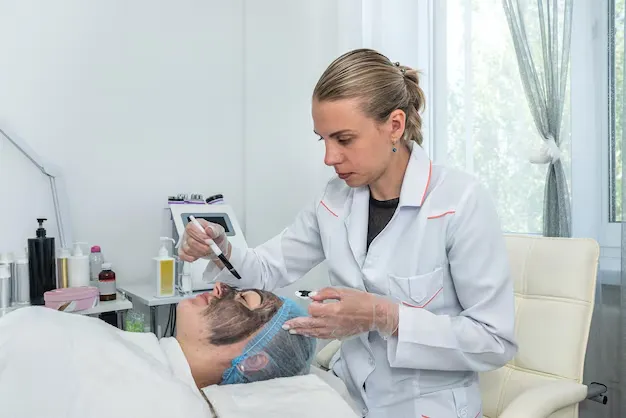The world of aesthetic medicine has evolved to offer an array of treatments designed to cater to diverse needs and preferences. With this evolution, the importance of personalization in aesthetic procedures has gained unprecedented emphasis. Personalizing treatments ensures that each individual receives the care and results that are best for them. Deciding on the right aesthetic procedure can be a transformative experience, but it requires careful consideration and guidance. Below, you will find essential information to help choose the treatment that resonates with your unique requirements.
Understanding Personalization in Aesthetic Treatments
In aesthetic medicine, personalization is essential for optimal results. Treatments are tailored to an individual’s age, skin tone, texture, and specific concerns, ensuring a plan as unique as the person receiving it. Modern tools, from detailed skin analyses to customized aftercare programs, allow providers to design protocols that respond precisely to the body’s needs. Choosing practitioners committed to this personalized approach maximizes effectiveness while minimizing adverse reactions.
Clinics like Anne Therese Aesthetic Medicine in Gahanna exemplify this philosophy, offering customized treatment plans that align with each client’s goals, lifestyle, and skin health. Personalized options range from non-invasive procedures like fillers and laser therapy to surgical solutions, and advancements in technology continue to expand the possibilities for tailored aesthetic care.
Evaluating Your Skin Type and Condition
Understanding your skin type is crucial for selecting the right aesthetic treatment. Skin can be oily, dry, combination, sensitive, or normal, and each type responds differently to procedures. Knowing your type helps prevent side effects and ensures effectiveness. For example, treatments that worsen dryness may not suit dry skin, while oily skin might resist certain therapies. Beyond type, evaluating skin condition is vital. Concerns like acne, fine lines, or hyperpigmentation guide the choice and intensity of treatments. Some procedures, such as lasers, target discoloration effectively but may irritate sensitive or inflamed skin.
Professional assessment enhances treatment precision. Tools like dermoscopy and VISIA skin analysis reveal underlying issues invisible to the naked eye, helping practitioners tailor approaches. Age and skin resiliency also matter. Younger skin may respond more quickly, while mature or scar-prone skin demands caution. Considering both type and condition allows practitioners to craft treatments that optimize results while minimizing risk.
The Role of Technology in Customized Aesthetic Procedures
Technological advancements have transformed cosmetic treatments, enabling highly personalized care. Practitioners now use tools like customizable lasers and 3D imaging software to tailor procedures to an individual’s facial structure, skin quality, and desired results. AI-driven diagnostic systems further enhance precision, predicting outcomes and guiding optimal treatment sequences that respect each patient’s unique physiology.
Technology alone cannot replace expertise. Skilled practitioners interpret data and refine tech-driven recommendations, blending human judgment with machine accuracy to achieve the best results. With more clinics adopting advanced tools, patients benefit from state-of-the-art personalized care, highlighting a commitment to individualized treatments and continuous innovation in aesthetic medicine.
Balancing Budget and Goals in Selecting Aesthetic Treatments
The cost of aesthetic treatments varies widely depending on procedure complexity, provider expertise, and technology used. While lower prices can be tempting, prioritizing cost over quality can compromise results and safety. Discussing your budget openly with your provider can help identify feasible options, as many clinics offer payment plans or treatment packages that maintain high standards. Focusing on value rather than the cheapest option often leads to better outcomes and fewer repeat procedures, making the investment more worthwhile.
Advances in technology and competitive pricing are making aesthetic treatments increasingly accessible. Considering the longevity of results is essential, as some higher-priced procedures deliver lasting benefits compared to cheaper alternatives that require frequent repetition. Evaluating the overall cost over time helps ensure your choices align with both your goals and financial plan.
Consultation Is Key: Preparing Questions for Your Provider
A consultation is a pivotal step in your aesthetic journey, providing the foundation for a personalized treatment plan. Arriving prepared with questions about procedures, recovery, side effects, and the provider’s experience helps you understand your options and make informed decisions. Tailor your inquiries to your goals and lifestyle, such as exploring treatments with minimal downtime or aligning with your vision of beauty.
Providers will also review your medical history and expectations, so honesty is essential for a safe and effective plan. Building rapport and trust during the consultation ensures clear communication, while listening to your intuition allows you to seek second opinions or take additional time to decide on the approach that best suits your needs.
Altogether, the landscape of aesthetic treatments offers abundant options for customization, catering to individual beauty goals and health concerns. By considering the factors outlined, you can navigate this complex field with confidence, meeting your aspirations with both wisdom and eagerness. Personalization in aesthetic medicine is not just about superficial appearance; it’s a testament to the individual care and detailed planning that make each journey unique and each outcome a personal triumph.

